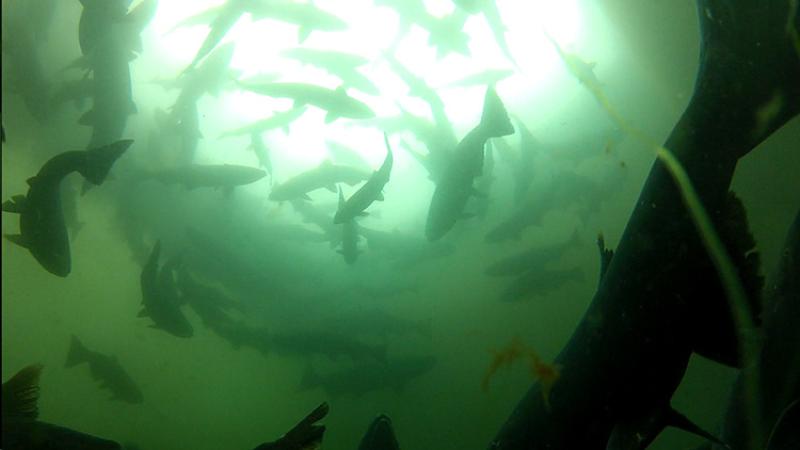
News & Views
Genetics
Research
Genetic study examines DNA differences of hatchery and wild salmon within a few generations
February 23, 2024 By Hatchery International staff
 (Photo: NOAA)
(Photo: NOAA) A new genetic study shows hatchery salmon’s adaptation to their environment can lead to potentially adaptive genetic differences between hatchery and wild salmon populations in only a few generations.
The collaborative research was conducted by scientists from the Alaska Fisheries Science Center, Alaska Department of Fish and Game, and Texas Christian University.
Pacific salmon hatcheries are used to increase harvest opportunities and supplement declining populations in the wild. Many hatcheries aim to minimize the genetic and ecological impacts of hatchery techniques during the collection, mating, and rearing of fish. It’s been observed that hatchery rearing can select for traits that may be disadvantageous in the wild which could have downstream implications for native stocks if these fish breed with wild fish when they are released.
One of the goals of this study was to identify the genetic signatures of hatchery-induced adaptation, known as domestication selection – which is the primary mechanism that leads to reduced fitness (the ability to survive and reproduce) for hatchery fish. The information could aid in the development of management approaches that reduce unwanted changes in hatchery-reared fish.
Scientists do not know which traits may be driving the observed fitness reductions and how they may affect the ability of hatchery salmon to adapt to future environmental changes.
“The purpose of our study was to determine if levels of domestication selection varied among hatcheries and if there were any commonalities across the populations,” said Natasha Howe, lead author and Texas Christian University student. “For example, if we observed the same pattern across all hatchery populations at certain locations in the genome, then that would be pretty striking evidence that those regions are likely influenced by hatchery rearing. Then, we could target those regions in future studies to understand what’s driving domestication. We predicted that hatchery practices could have a large influence on the amount of domestication selection occurring. Hatchery practices that prioritize genetic diversity can potentially reduce the genetic impacts of domestication,” added Howe.
Scientists used whole genome sequencing to look for signals of domestication selection in three separate hatchery populations of Chinook salmon in Southeast Alaska. In Alaska, salmon hatcheries are primarily intended to enhance fisheries rather than to directly supplement wild populations. The three hatchery populations, Whitman Lake Hatchery, Macaulay Hatchery and Little Port Walter, had significant differences in their fish culture methods and goals.
Scientists found that hatchery lines from all three hatcheries were subtly to moderately diverged from their wild stocks of origin. This is because these hatchery populations have been separated for approximately 30 to 40 years.
The Andrew Creek and Chickamin stocks at Macaulay and Whitman Lake hatcheries were more similar to their wild populations than the Unuk stock at Little Port Walter. This is mostly because the production-focused facilities spawn more fish each year than the smaller, research-focused facility (Little Port Walter). This means larger populations can help preserve overall genetic diversity.
“Interestingly, changes in the genetic sequences between hatchery and wild salmon were not the same across the different hatcheries, suggesting that domestication of hatchery fish can occur through different genetic pathways,” said Charlie Waters, research fish biologist at Alaska Fisheries Science Center and manager of Little Port Walter Research Station.
“Unfortunately, we lacked phenotypic data such as length, weight, and fecundity of individual fish for two of the hatchery populations, so we still do not know which traits are most affected by hatchery rearing.”
The results from this study highlight the need for hatchery monitoring programs to collect paired genotype-phenotype data. Identifying the links between the genetic code (genotype) and expressed traits (phenotype) in salmon will be key to future research efforts. It will help scientists and managers understand how the fitness of hatchery fish may be affected and how salmon may respond to changing environmental conditions.
Print this page
Advertisement
- Benchmark expands genetic services globally
- Genics launches Shrimp MultiPath2.0 for early pathogen detection





